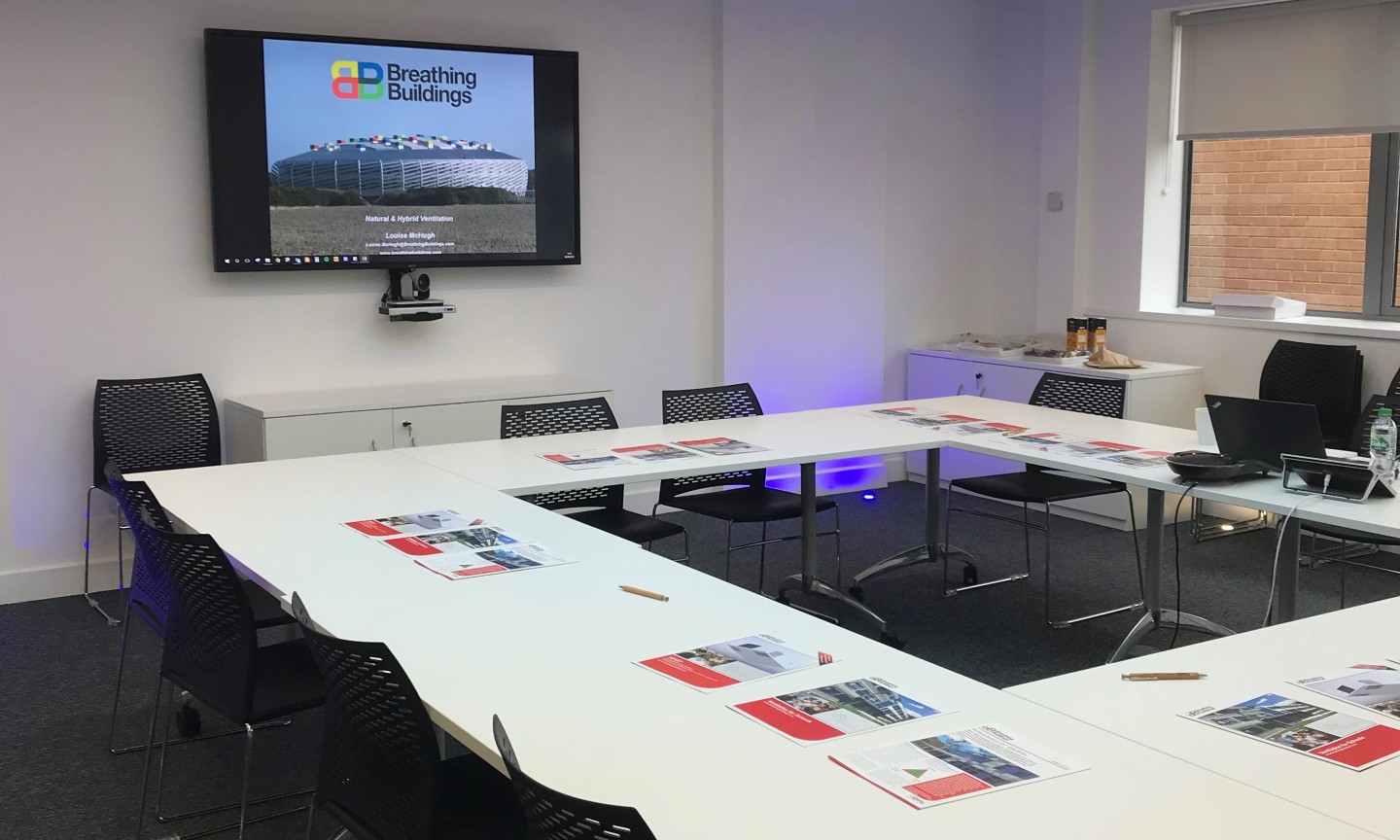Breathing Buildings, the UK’s leading provider of controlled hybrid ventilation systems, is offering a CIBSE-approved CPD on meeting the requirements of BB101: Guidelines on ventilation, thermal comfort and indoor air quality in schools and TM52: The Limits of Thermal Comfort; Avoiding Overheating. This essential course is particularly timely with the current focus on schools and ventilation in order to improve indoor air quality (IAQ) and help mitigate COVID-19 transmission, while helping ensure thermal comfort. CO2 is currently hitting the headlines in schools with CO2 monitors being used as proxy sensors for ensuring good ventilation to mitigate COVID transmission. However, CO2 is air pollution in its own right and so it is important to tackle high levels of CO2 by ventilating classrooms to help improve learning outcomes, while ensuring a comfortable learning environment.
The ‘Meeting the Requirements of BB101 and TM52 CPD’ examines the current ventilation and thermal requirements within BB101 and TM52 and provides an introduction to Natural and Hybrid ventilation strategies, how mixing ventilation works and how these ventilation solutions can help meet the demands of the regulations. The course also covers requirements of design guidance, discussing overheating and IAQ criteria and what is needed in order to achieve compliance, as well as what it means for the ventilation systems being installed.
“BB101 and TM52 comprehensively address the issues of air quality, thermal comfort and energy use, all of which are key to the design of effective ventilation systems in schools. Breathing Buildings has written this CIBSE-approved CPD course to help consultants understand the guidance in relation to both indoor air quality, energy efficiency and thermal comfort, as well as COVID-19, and the role that natural and hybrid ventilation plays in creating healthy, comfortable and safe spaces within schools,” said Tom Wodcke, Product Manager at Breathing Buildings.
The CPD includes the following learning objectives:
- Challenges with BB101 V4
- What is winter mixing and summer night cooling?
- Current building requirements for BB101
- What is summertime overheating?
- BB101 ventilation systems
- Acoustics and draught calculations
- What are the different ventilation strategies?
- COVID-19 and ventilation systems
Within the CPD Breathing Buildings explains that within BB101 2018 the Government took a tough stance on air quality in the classroom compared to previous revisions including maximum CO2 limits which cannot be breached for 20 consecutive minutes. The guidance advises that where natural ventilation is used, or when hybrid ventilation systems are operating in natural mode, in general teaching and learning spaces the daily average concentration of CO2 must be less than 1500ppm when occupied. The maximum concentration should not exceed 2000ppm for more than 20 consecutive minutes each day. Meanwhile, for mechanical ventilation the daily average CO2 level must be less than 1000ppm and must not exceed 1500ppm for more than 20 consecutive minutes each day.
Controlling CO2 levels significantly improves IAQ in teaching spaces with Breathing Buildings explaining in the CPD how good indoor air quality and thermal comfort can be achieved with energy efficient hybrid and natural ventilation strategies. For example, Breathing Buildings’ NVHR® (Natural Ventilation with Heat Recycling) hybrid ventilation system is designed specifically to meet the robust ventilation criteria set out for schools. Its patented ultra-efficient facade-based mixing ventilation allows single-sided, enhanced natural ventilation in deep plan spaces whilst making the most of internal heat gains to deliver superb thermal comfort and indoor air quality. NVHR® tackles energy efficiency and environmental issues and provides excellent IAQ in schools and other facilities.
Meanwhile, Breathing Buildings’ R-Series and S-Series e-stack ventilation systems are designed for rooms which have access to the exterior via the roof. In summer, low-level opening windows bring warm, fresh air directly onto occupants and the R-Series and S-Series units with their roof terminals act as a high-level exhaust vents. In winter, a mixing ventilation strategy operates – this eliminates cold draughts without the use of preheating radiators/heating batteries and hence has major energy saving benefits.
Breathing Buildings is committed to excellence in school ventilation design and advised on BB101. There are supporting BB101 design calculation tools; the cold draught calculator and the CO2 Build up Calculator, to aid school ventilation design. Both of which are available at https://www.breathingbuildings.com


